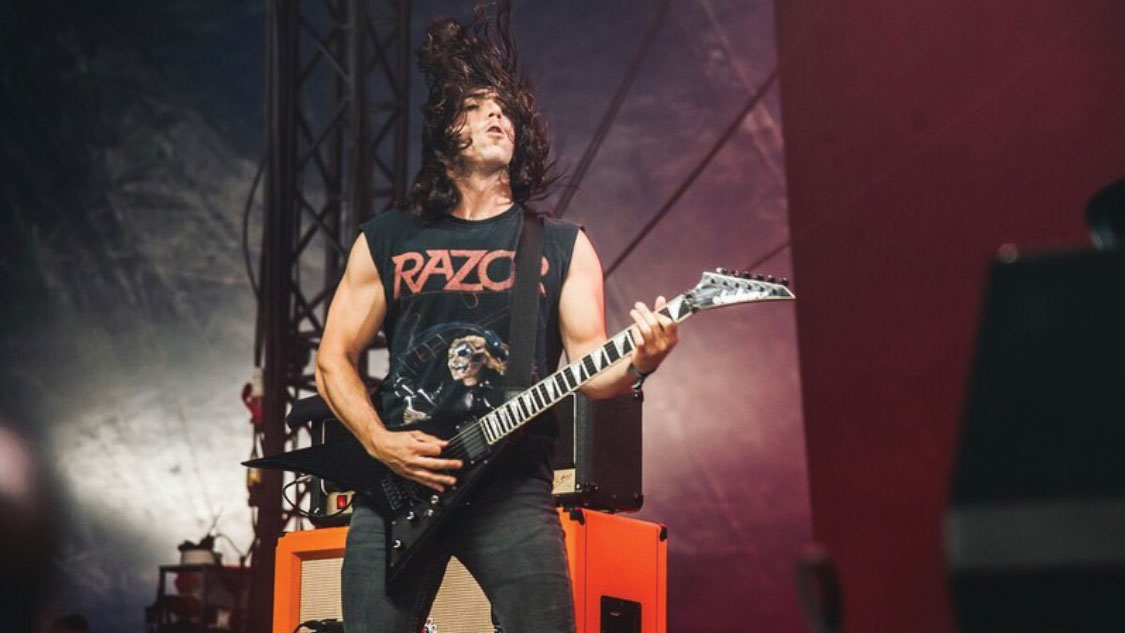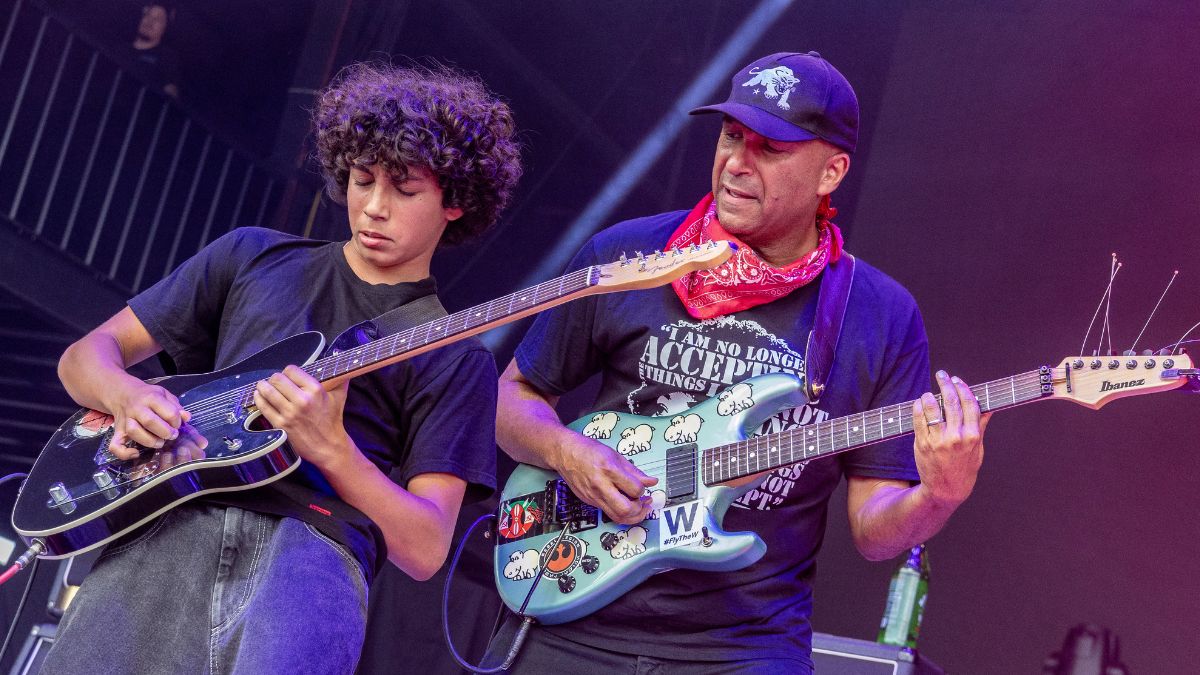Blake Ibanez: “Fugitive has the same attack and tightness that Power Trip has, but there’s a little more room to swing around and play some groovier riffs”
The Dallas riff-master on moving on after the death of Power Trip frontman Riley Gale and tuning down a step for extra darkness on those mean ol' metal grooves

Beloved crossover thrashers Power Trip were poised to return the heavy metal crown to their hometown of Dallas, where their forebears Pantera created some of the genre’s most brutal riffs and grooves in the ’90s. But then the unthinkable happened.
Two-and-a-half years to the day after releasing their now-classic 2017 album, Nightmare Logic, vocalist Riley Gale died of an accidental overdose on the eve of a European tour with Lamb of God and Kreator.
When the news broke, guitarist Blake Ibanez, who was responsible for the bruising riffs behind Power Trip’s whiplash hardcore, put down his guitar and didn’t touch it for months. Ibanez had formed the band with Gale in 2008, and the loss left him directionless and reeling.
“At some point I just was like, I’ve gotta move forward,” Ibanez says. “I can’t let this slow me down or rule my life. It’s a really tragic, sad thing, but this type of stuff happens in life, and unfortunately to a lot of people. I had to accept the circumstances. So, I kept writing.”
A year and a half after losing his creative partner in Power Trip, Ibanez decided to channel his energy in a new direction. He formed a new band, Fugitive, with friends from Texas hardcore bands like Creeping Death and Skourge, and picked up second guitarist Victor Gutierrez of Impaler.
The band’s debut EP, Maniac, released in August 2022, picks up where Power Trip was sadly cut short. On their first four slabs of thrash – plus a cover of Raise the Dead by Swedish black metal pioneers Bathory to round out the five-song set – Ibanez explores outside of Power Trip’s established sound without losing the plot.
“Fugitive has the same attack and tightness thing that Power Trip has, but there’s a little more room to swing around and play some groovier riffs than maybe what Power Trip would do,” Ibanez says. “It’s a little less rigid in terms of the style.”
All the latest guitar news, interviews, lessons, reviews, deals and more, direct to your inbox!
Anything that’s valuable or worth doing in your life takes a lot of work, and it’s not easy. I’m glad I decided to do it
The band lays down a groove-metal grind on The Javelin, Maniac’s opening instrumental, before segueing into breakneck thrash on the title cut. They split the difference on Hell’s Half-Acre, which roars from a frenetic pace to a dirge-like lurch for the final minute and a half.
But throughout Maniac’s 17-minute runtime, the electric guitars sound heavier than anything Power Trip released – a trait attributed to Ibanez writing in the key of D, a full-step down from E, where Power Trip and heroes like Metallica, Leeway and Vio-Lence played. The switch came during his downtime after Gale’s death, when he kept a few of his guitars tuned to D so he could learn some songs and riffs in that tuning. It stuck, and it helped Fugitive create a sound apart from Power Trip.
“Whenever I picked [one of those guitars] up to play, I would be like, ‘Oh, this is kind of fun – this is a different vibe,’” he says. “And you know, certain riffs sound better a little down-tuned. It just sounds a little darker. So it opened up some new doors to play some different things. It was refreshing, ’cause if I kept playing in E and tried to do another band, it would probably just sound like Power Trip.”
Ibanez is mindful to use the other instruments around him and the art of timing to make riffs hit the listener in a heavy way, not unlike the interplay between Dimebag and Vinnie Paul on the brutal breakdown in Pantera’s Primal Concrete Sledge.
“I’m always thinking of the drums when I write a riff,” he says. “Generally, I like it when there’s a lot of spacing between the riff and the kick pattern – like a single-kick pattern, something that leaves a lot of room for the riff to bounce around and hit on the snare at the right point.”
Another indispensable part of the equation for Ibanez is his tone, which is usually his Jackson Randy Rhoads V through the Marshall JCM800 he used on Nightmare Logic and everything he’s done since. On Maniac, though, he tracked with a pair of Gibsons – a Les Paul Standard to beef up his new riffs, and a Flying V outfitted with a Kahler tremolo for leads.
While Power Trip’s future is in limbo – even though Ibanez and drummer Chris Ulsh have played together some, and Ibanez already wrote the band’s third album – Fugitive is clearly Ibanez’s main focus for the foreseeable future.
“When you’re in a band or an artist of any kind, I don’t think you really are fulfilled unless you’re putting stuff out there or performing,” he says. “But if you’re not doing either of those things, then you don’t feel very fulfilled at all.
“Anything that’s valuable or worth doing in your life takes a lot of work, and it’s not easy,” he adds. “So I’m glad I decided to do it.”
- Maniac is out now and self-released.
Jim Beaugez has written about music for Rolling Stone, Smithsonian, Guitar World, Guitar Player and many other publications. He created My Life in Five Riffs, a multimedia documentary series for Guitar Player that traces contemporary artists back to their sources of inspiration, and previously spent a decade in the musical instruments industry.




